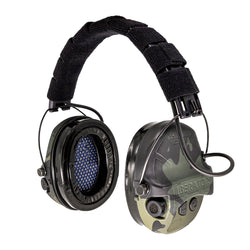Last week, we kicked off the first article in our five-part series about the Medical Applications Course at Baer Solutions. Led by Paul “Doc” Pollack, this course benefits from his extensive experience as a former Fleet Marine Force Corpsman, a current EMS Critical Care Paramedic, and a District Chief and deputy in his Sheriff’s Office Special Operations Division. He’s also a Safariland CORE member.
In our first post, we covered the M.A.R.C.H. algorithm, a helpful tool that officers, first responders, and responsible citizens can use to manage medical emergencies effectively. If you missed it, be sure to check it out!
Today, we’re shifting gears to discuss the concept of physiological timers and switches.
As Paul Pollack explains, “A lot of times, we go on the range and we do qualifications [with] basically just a white piece of paper with some scoring zones, but there’s no anatomy associated with it. So we try to plug and play that with an anatomical target to show them what timers and switches are.”

What Are Physiological Timers and Switches?
When a person is injured, it’s important to understand how the body reacts and what happens as it begins to decompensate. Some injuries lead to a gradual decline, while others cause immediate effects.
These responses are what we call timers and switches.
- Timers are injuries that cause a slow, steady decline. For example, an arterial bleed. At first, the injury might not seem critical, but as blood is lost, the person’s blood pressure drops. If untreated, this can eventually lead to unconsciousness
- Switches are injuries that cause an immediate disruption to the nervous system. For example, a direct hit to the T-box can sever neural connections, causing immediate incapacitation. If you witness someone collapsing as if “someone clipped the strings of a puppet,” that’s a sign of a switch.

Why It Matters
Understanding how the body reacts to injuries is essential, especially for those in high-risk professions or anyone involved in firearms use. With the training provided by Paul Pollack, participants gain practical skills to recognize and respond to these life-threatening bodily reactions.
For a more in-depth explanation, check out the full video here:
Learn More
Interested in improving your medical response skills? Baer Solutions offers upcoming courses designed to give you hands-on training. To register or inquire about custom training options, visit their website.

Stay tuned for our next article in this series, Why You Should Carry a Tourniquet.









